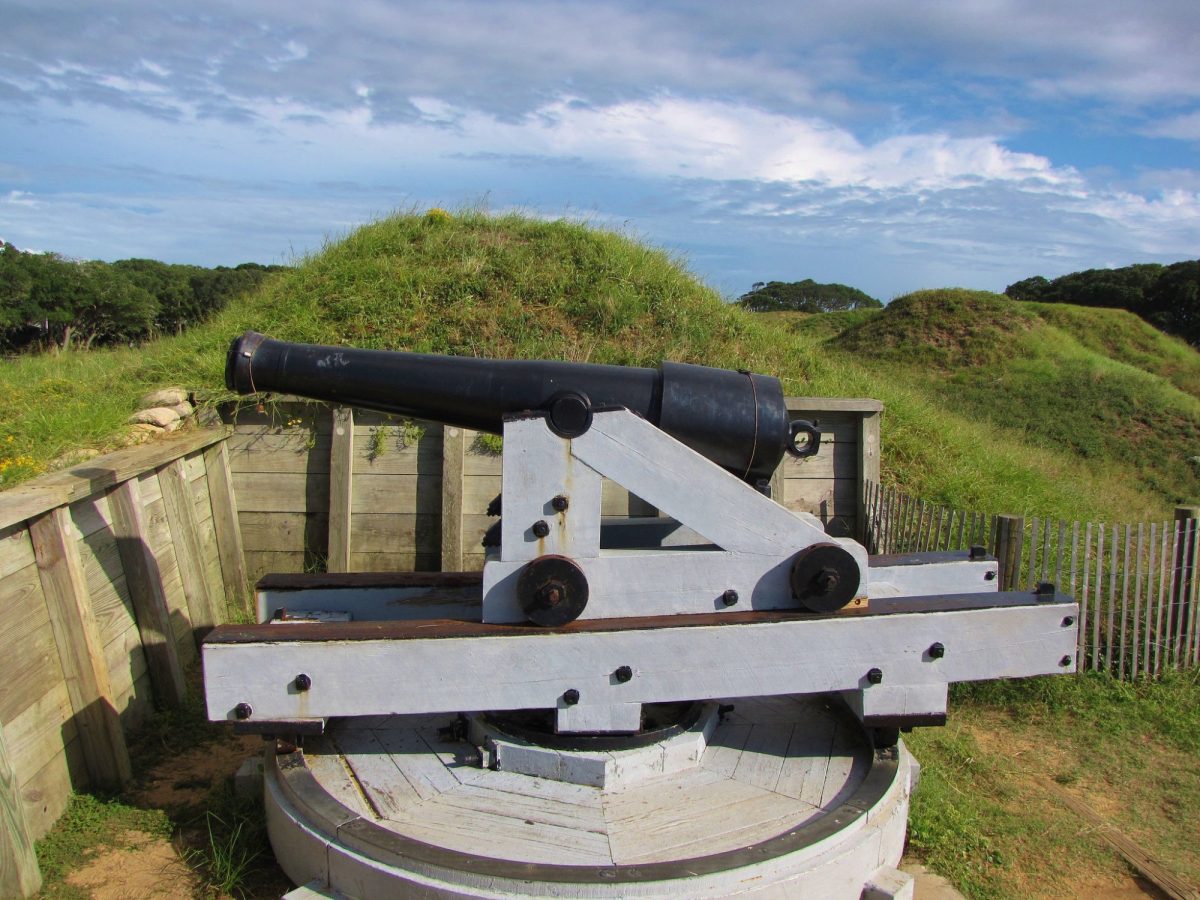
If you are from the South you likely know where the closest Civil War battleground is. If you visit the Wilmington area frequently, you will definitely be familiar with Fort Fisher. Beyond one of our nation’s best aquariums, Fort Fisher is a historic site in America’s bloodiest war.
The fort itself was built north of New Inlet as a series of batteries as a coastal defense on Federal Point. The initial construction was overseen by Major Charles Pattison Bolles, who was later replaced by Captain William Lord DeRosset, the first to see garrison duty there. Battery Bolles was the first armed redoubt at the construction site that later became Fort Fisher.
After the first year of war, new batteries popped up for further coastal defenses. Battery Meade was built north Battery Bolles, Battery Anderson further up the peninsula and Battery Gatlin was furthest north between Myrtle Sound and the Atlantic Ocean. The full defensive units became Fort Fisher, named after Colonel Charles F. Fisher who had been killed in the Battle of Bull Run.
Though work continued on the fort, it was brought up to snuff by Colonel William Lamb, who found the defense was not a strong as it should be. He transformed Fort Fisher by combining the existing structures with new additions, eventually creating the Land Face from Cape Fear to Shepherd’s Battery and the mile-long Sea Face to Mound Battery. Mound Battery soared 43 feet high and is now the area’s landmark.
The first attack on Fort Fisher, know as “Butler’s Folly,” consisted of the Louisiana weighed down with over 200 tons of powder ready to blow up the fort. The ship was not close enough to cause damage, only a big explosion.
The South’s last seaport fell a few days later during the second attack. After heavy fighting on land and sea, Fort Fisher surrendered to the Union army but not after many casualties. The Federals found
Today, only about 10 percent of Fort Fisher remains. You can tour Shepherd’s Battery and view the operational seacoast cannon and other cannons that were used in the war. Walking trails and outdoor exhibits line the oceanfront of what remains of the fort.
Inside, you can delve into more history about the construction and battles of Fort Fisher, complete with a fiber optic map of battle. Weapons, photographs and displays from the Civil War can be found throughout the center. Fort Fisher is a great place to visit for those who are history buffs and those who simply want to know more about the history of Wilmington and the role it played in America’s story.



